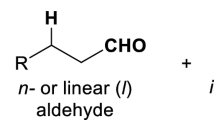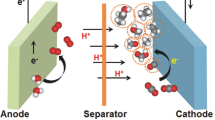Summary
-
1.
Activation energies were determined for the dehydrogenation of methylcyclohexane, isopropyl alcohol, and formic acid and the dehydration of isopropyl alcohol and formic acid over chromic oxide prepared in different ways. From these date the energies of the bonds formed by hydrogen, carbon, and oxygen with the chromic oxide surface were found.
-
2.
The effect of molecular structure and the method of preparing the catalyst were investigated for these reactions.
Similar content being viewed by others
Literature Cited
A. A. Balandin, J. Gen. Chem. 16, 793 (1946).
A. A. Balandin and A. A. Tolstopyatova, Proc. Acad. Sci. USSR 94, 49 (1954).
T. Cottrell, Strength of the Chemical Bond Foreign Lit. Press, Moscow, 1956).
Author information
Authors and Affiliations
Rights and permissions
About this article
Cite this article
Tolstopyatova, A.A., Dulitskaya, K.A. & Balandin, A.A. Effect of the method of preparation and the presence of a carrier on the catalytic activity of chromic oxide in dehydrogenation and dehydration reactions. Russ Chem Bull 5, 1285–1294 (1956). https://doi.org/10.1007/BF01173788
Received:
Issue Date:
DOI: https://doi.org/10.1007/BF01173788




